St. George Bird Fest 2025
Every year, the local Red Cliffs Audubon group in St. George sponsors a Bird Fest. My wife and I have attended each year since 2022. If you like birds at all, it is an amazing experience. Three days full of plenty of field trips all over the greater Zion area. It is held around the last week in April when bird migration really picks up through southern Utah. We attended it this year as usual and had a wonderful time.
This post is about the first day of the bird fest. On this day, we signed up for birding in local parks, specifically Tonaquint Nature Center and Boots-Cox Family Park, both of which are in the town of St. George. The other two days will be covered in their own posts following this one.
These posts will mainly be visual, showing the best photos of the day without too much discussion about each bird. Instead, the name of each bird will be a hot link to an authoritative listing about the bird if you would like to learn more.
Bird Photography Versus Birding
Before diving into the photographs, I want to give a short description giving my take on the difference between bird photography and birding. The goal of bird photography is to capture high quality images of the birds. Capturing fine feather detail in good light can be quite exciting.
Birding’s goal, however, is to see and identify as many birds as possible. A common phrase used by birders is “you have to bird every bird.” Meaning you never know when you will see something rare, so check out every bird even if you think it is ordinary at first glance.
One of the hazards for a photographer of going out with a group of birders, is that they will find tiny birds 500 yards away. And even with an 8K sensor behind a 700 mm lens, the bird still looks like a dot. And even with the best sharpening and enhancing tools available, the picture still looks awful.
For example, one of the first birds we saw this day was a Lesser Goldfinch from far away.

Of course there is overlap between the two as well. I will use my camera pretty much as a spotting scope just to identify a bird from a distance and only take a picture if I can’t identify it. Sometimes this pays off well, like the time I captured a photo of a bird no one else paid attention to. Later, it was identified as a Yellow-throated Vireo, a bird that is common in the Eastern US, but rarely found in Utah. There were only 10 sightings ever recorded from Utah. The picture was not good, but good enough to identify. That sighting ended up being officially reported as a rare bird sighting in Utah.
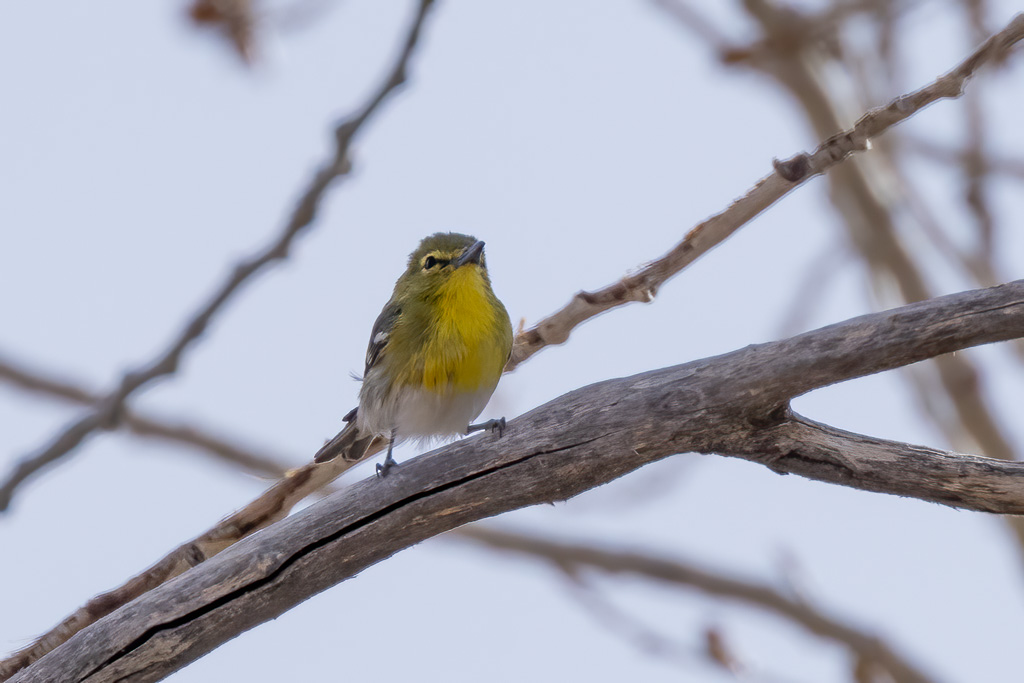
Now, on to our first day…
Tonaquint Nature Center
First stop was the Tonaquint Nature Center. At the pond we pretty much saw only Mallards and a few turtles sticking their heads up out of the water. It would have been nice to see some other varieties of ducks, but it didn’t happen that morning. Once we stepped away from the pond, we did get more variety.
Ruby-crowned Kinglet
A kind of cute little bird we often see around here is the Ruby-crowned Kinglet. It is mostly a drab yellow color, so not so special, but the males have a brilliant little ruby crown they display when excited or alarmed. Otherwise it is hidden. Unfortunately, I didn’t capture any photos of the crowns that day. But do look at the link to see what it looks like.
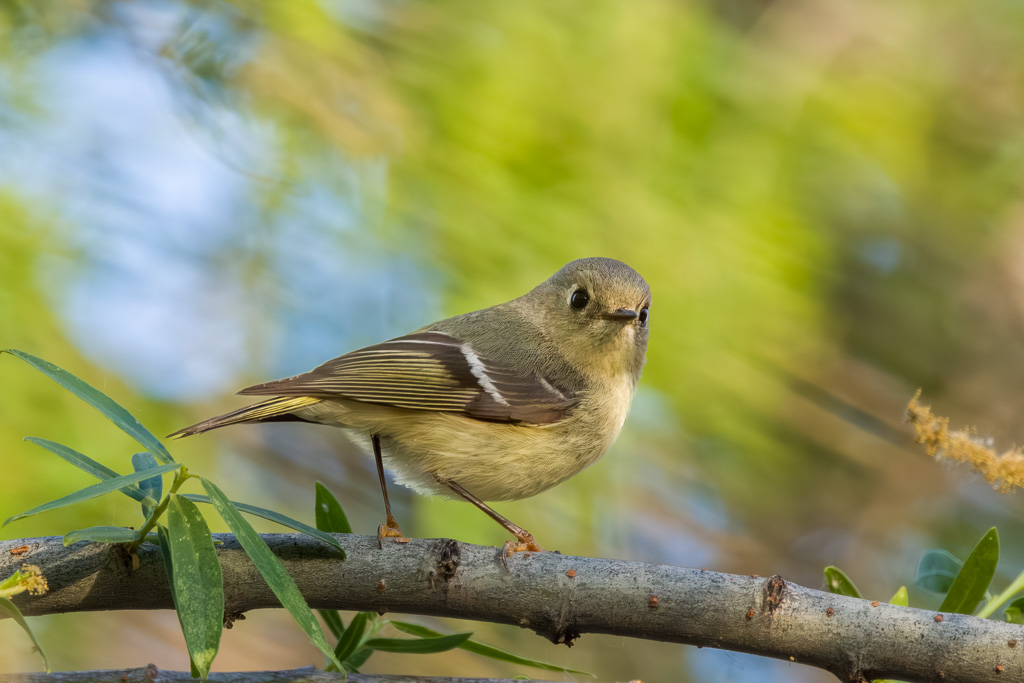
Black Phoebe
The Black Phoebe is a type of flycatcher and likes to sit on a perch waiting for insects to fly by where it then flies up into the air to catch it, hence the description “flycatcher”. The one we saw here at this nature center really had a full buffet going on. Notice all the bugs flying around him in the photo.
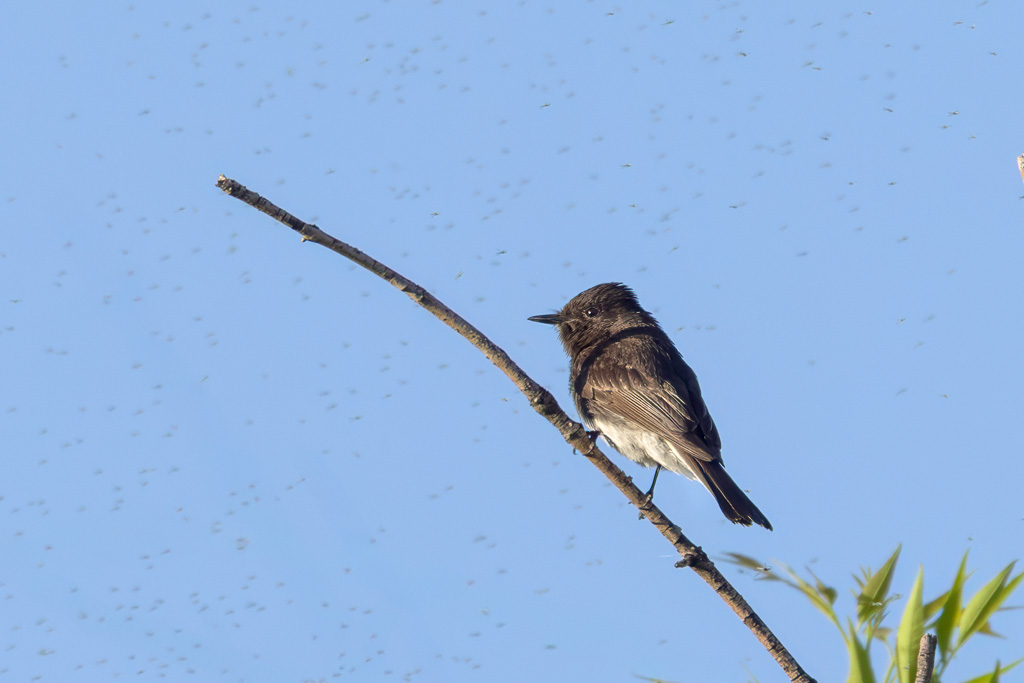

Yellow-rumped Warbler
In the west here, we may also call the Yellow-rumped Warbler, the Audubon’s Warbler. It has a pretty pattern of black, white, gray, and yellow.

Yellow Warbler
A second type of Warbler we saw is the Yellow Warbler. Its body is all yellow with some darker streaks. This warbler’s rather loud song is also quite recognizable when it pierces the silence. It is quite small and stays deep in the leaves, so it is heard far more often than it is seen.
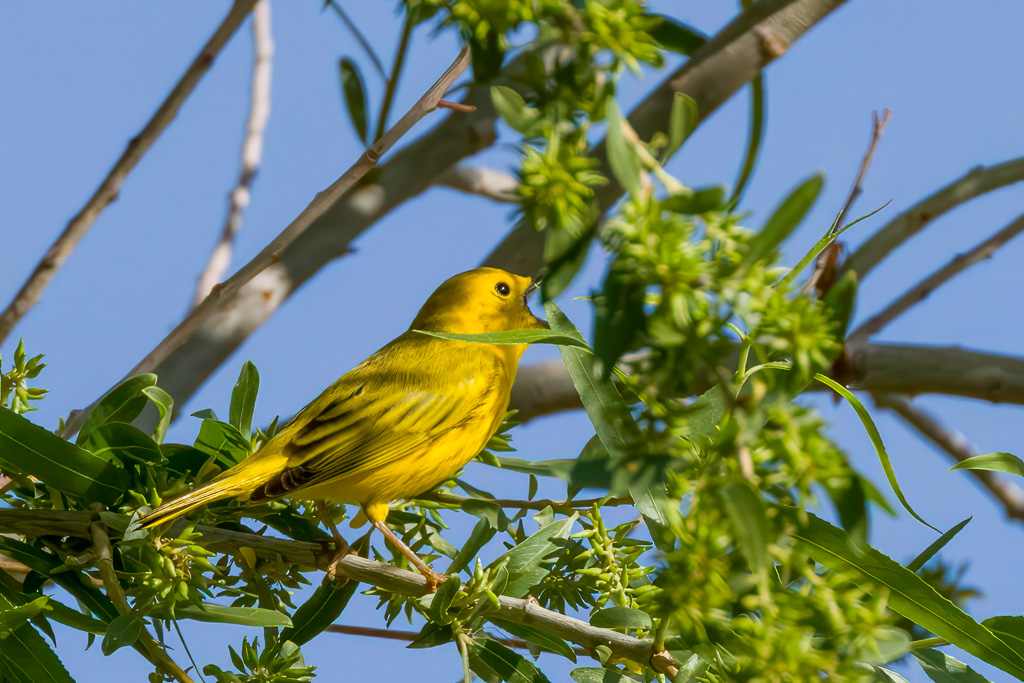
Song Sparrow
The first of two types of Sparrows that we saw is the Song Sparrow. It is named well because it does have a very nice song.

White-crowned Sparrow
The other type of Sparrow we saw is the White-crowned Sparrow. We saw quite a few of these. The photo here is of one that decided to use a muddy pool to take a bath in. I don’t think I would do this, but he seemed to like it.

Not a Bird
Then there are the animals that aren’t birds, but think they are. What is that guy doing way up in the delicate branches? He actually looked pretty cute in the branches, so I had to include his photo here.

Cooper's Hawk
A Cooper’s Hawk made a quick flyby.
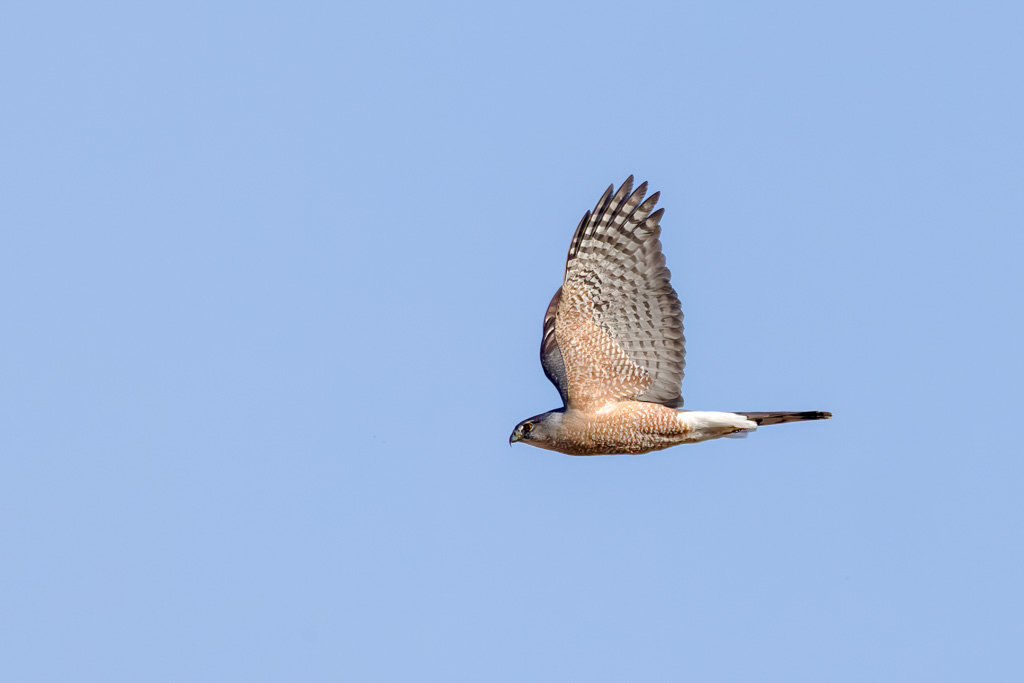
Anna's Hummingbird
We saw three types of Hummingbirds that day, but this photo of an Anna’s Hummingbird is the best one I got. Even this shot suffered because of the strong backlighting.

Mute Swan
By another pond we saw several pairs of Mute Swans on the opposite bank.

Cliff Swallow
Also flying around this pond were a bunch of Cliff Swallows. Capturing closeups of Swallows in flight is one of the more difficult things to do with a camera because they are always darting about and changing directions rapidly. But I did manage to get a decent one.
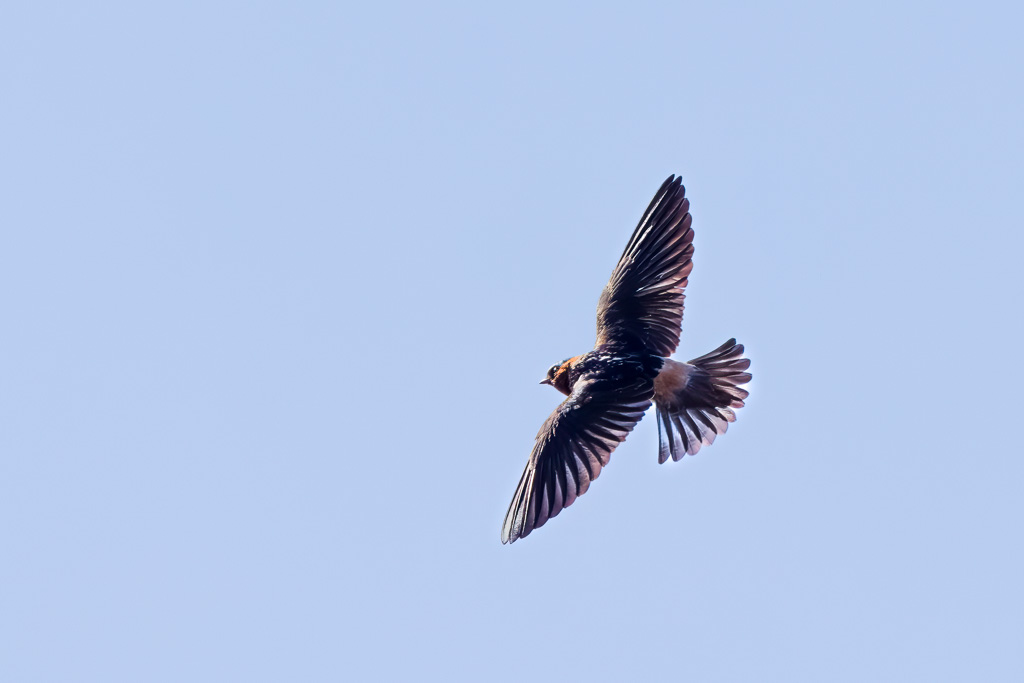
Greater Roadrunner
One of the participants on this field trip came from another part of the country and had never seen a Greater Roadrunner. But she wanted to see one very much. She got her wish. My favorite visual aspect of Roadrunners is the red, white, and blue patch behind the eyes. Very patriotic.

Bullock's Oriole
A Bullock’s Oriole made an appearance. In fact, he is so pretty, he gets two photos.
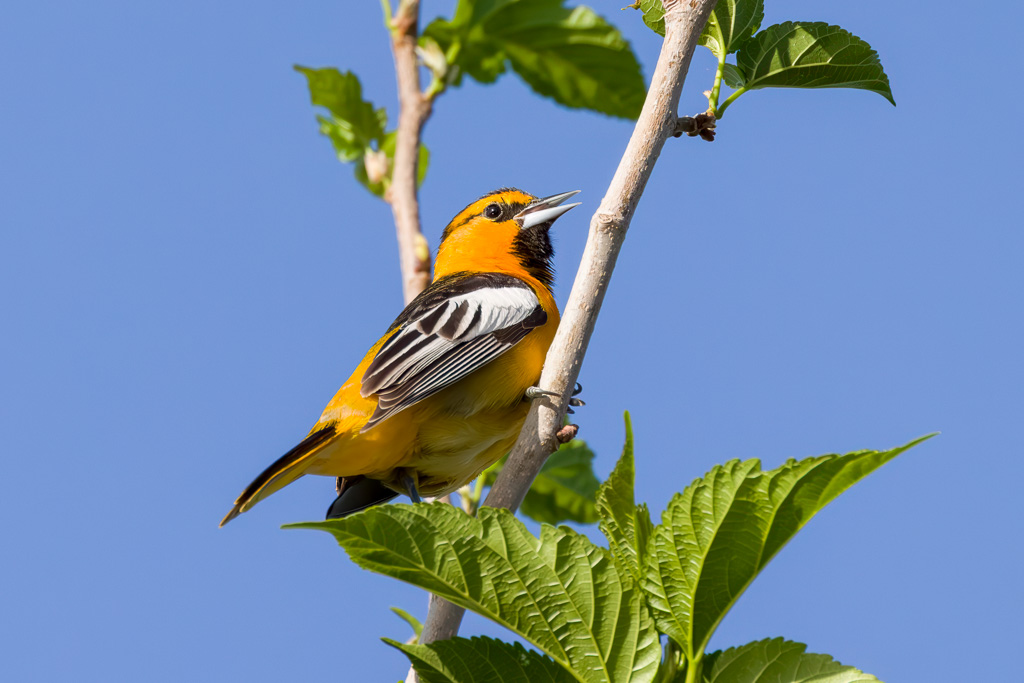
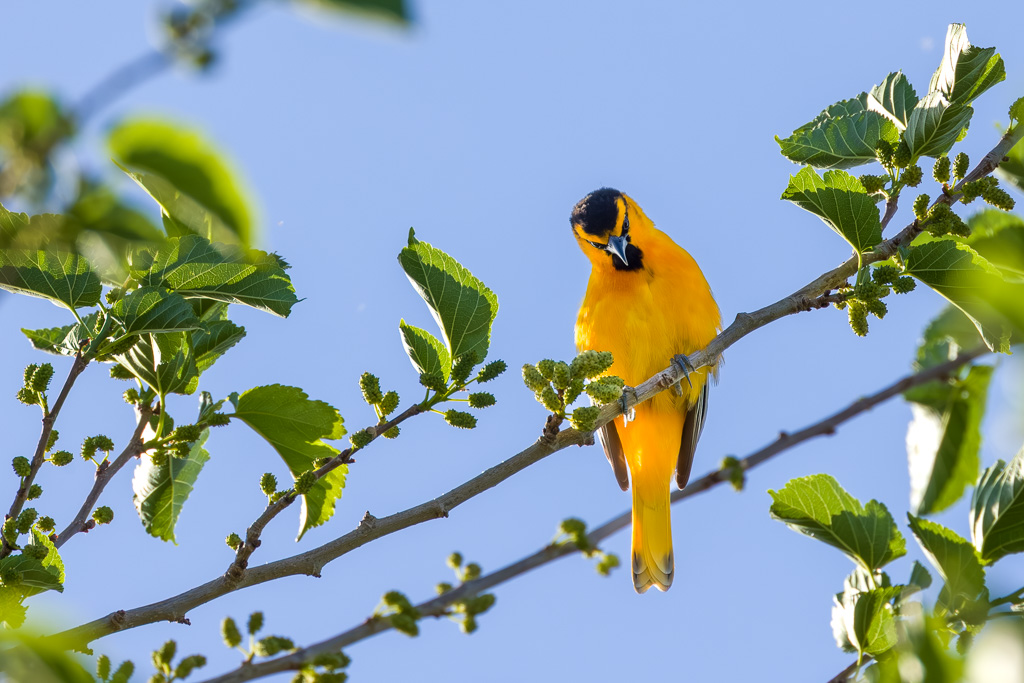
Lazuli Bunting
Lazuli Buntings are very exciting to find because of their nice blue color. They are smaller than Blue Jay’s, but larger than Bluebirds. I saw one last year for the first time ever and was happy to see it again this year. This individual looks like it is probably a non-breeding male. During breeding season, the coloration is more striking.
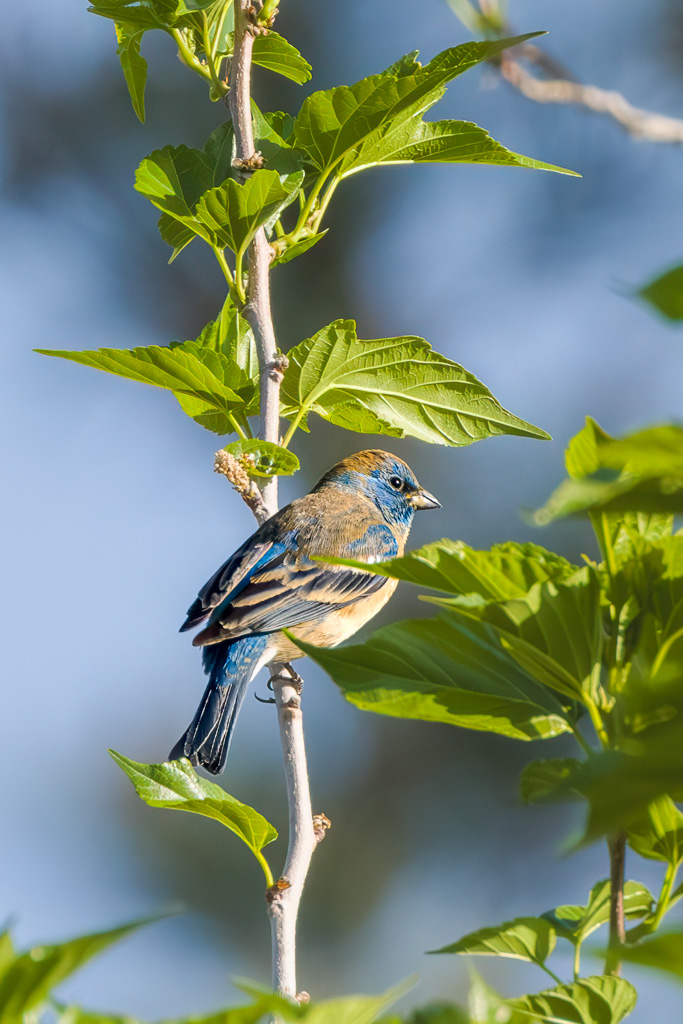
Red-naped Sapsucker
Two different types of Woodpeckers paid a visit. The first was a Red-naped Sapsucker. Unfortunately, we saw him from somewhat of a distance and as usual, he flew away as we got closer. Still, not a bad shot.

Ladder-backed Woodpecker
The second type of Woodpecker we saw was a Ladder-backed Woodpecker. Did I mention the Ladder-backed Woodpecker was selected as this year’s bird of the year for the bird fest?

Boots-Cox Family Park
After a few hours, it was off to the second park of the day. There were fewer birds here, but the big draw is the Vermilion Flycatcher that comes back here every year. And he did not disappoint.
Cooper's Hawk
But the first bird we actually saw was a Cooper’s Hawk perched in a tree. Yes, it is the same type of bird I saw flying at the earlier location. But this was a much better view here. Those piercing red eyes are quite impressive.
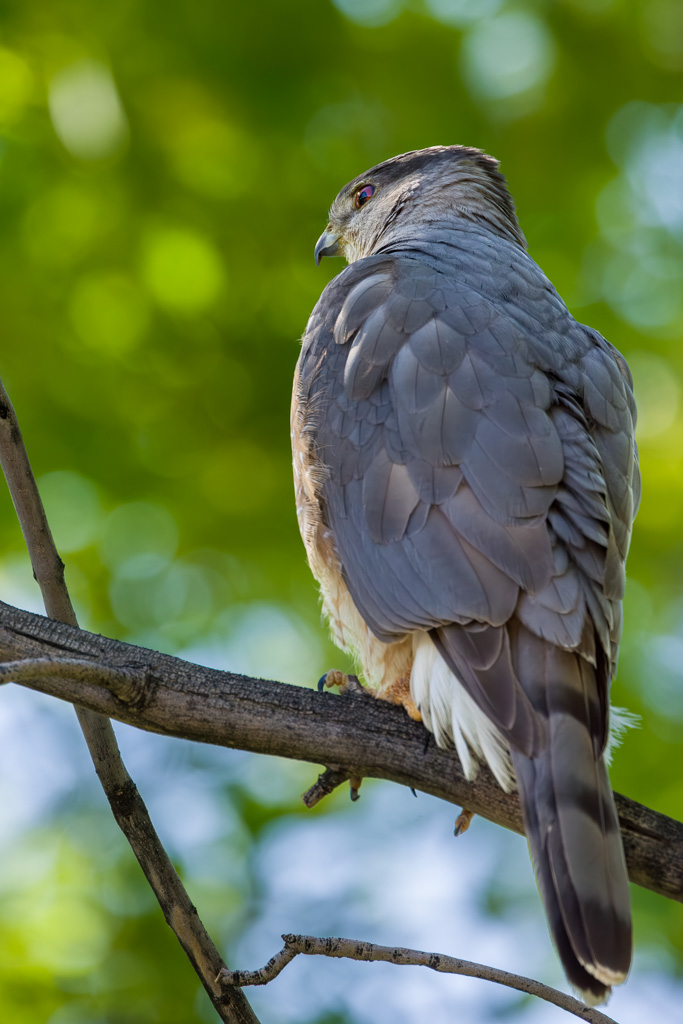
Vermilion Flycatcher
And now, drum roll please. What we have all been waiting for… the Vermilion Flycatcher.
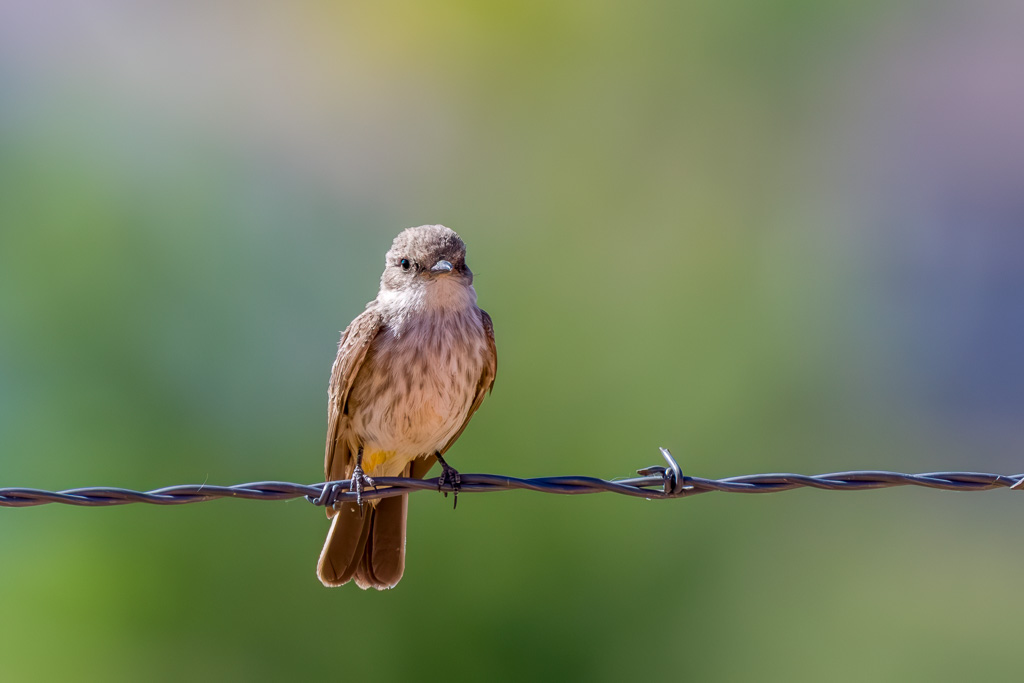
Well, ok, this is the female. And we know both she and you are wanting to see the male. So here he is, three photos worth. The males with the vermilion-colored head and underbody really are great eye-candy.
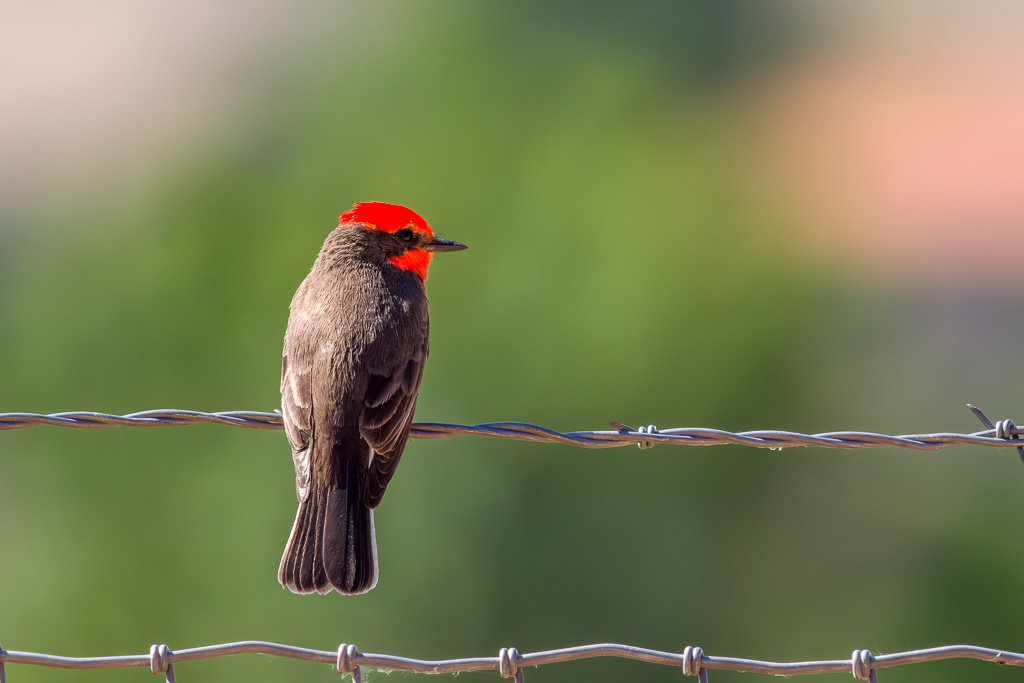
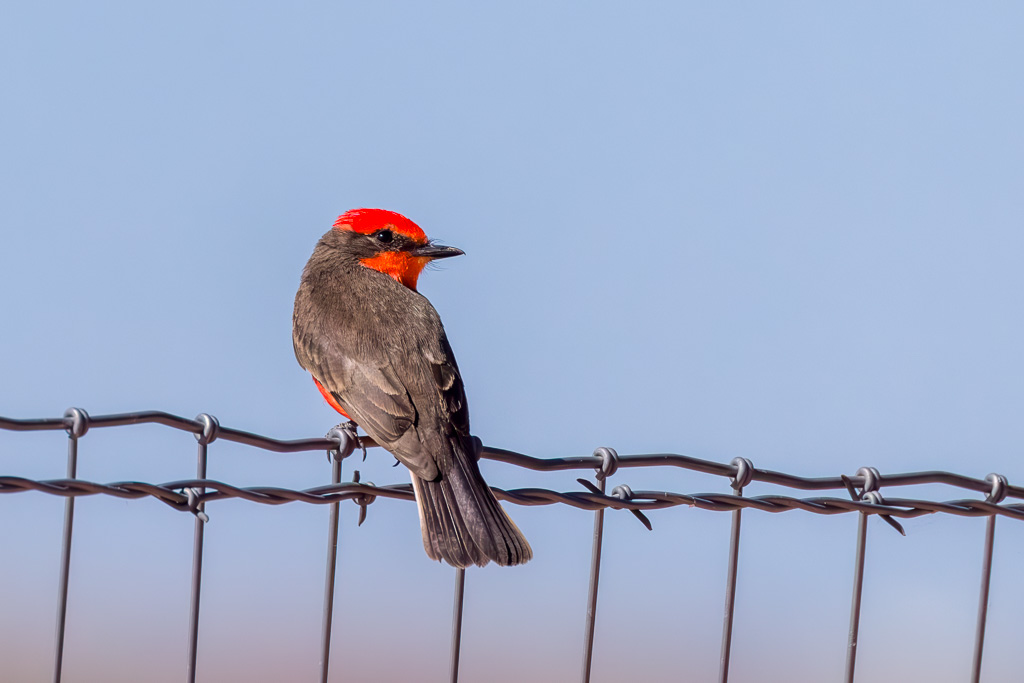

And this concludes day 1 of the St. George Bird Fest 2025. Stay tuned for days 2 and 3 coming soon.

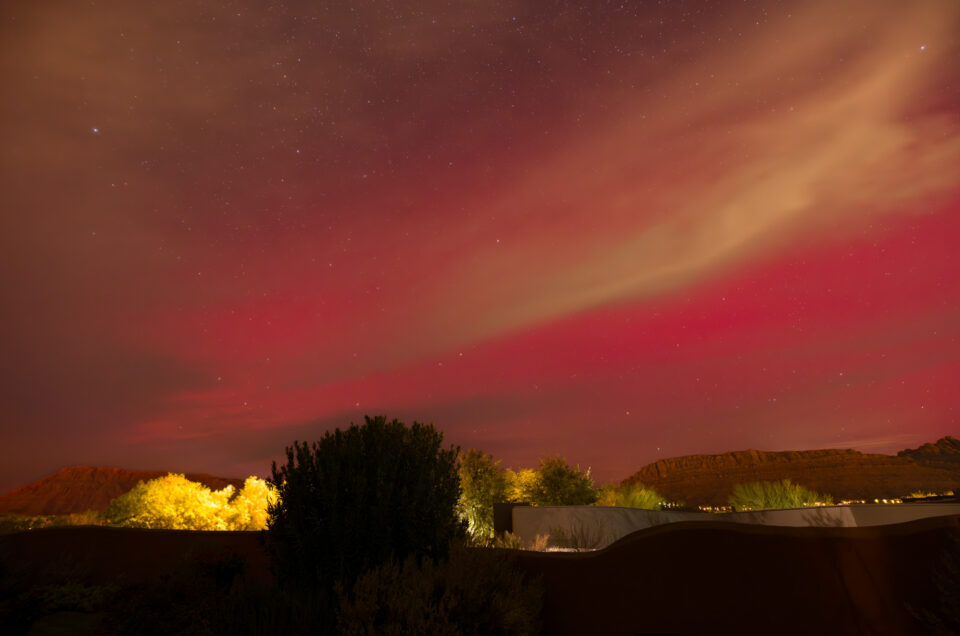
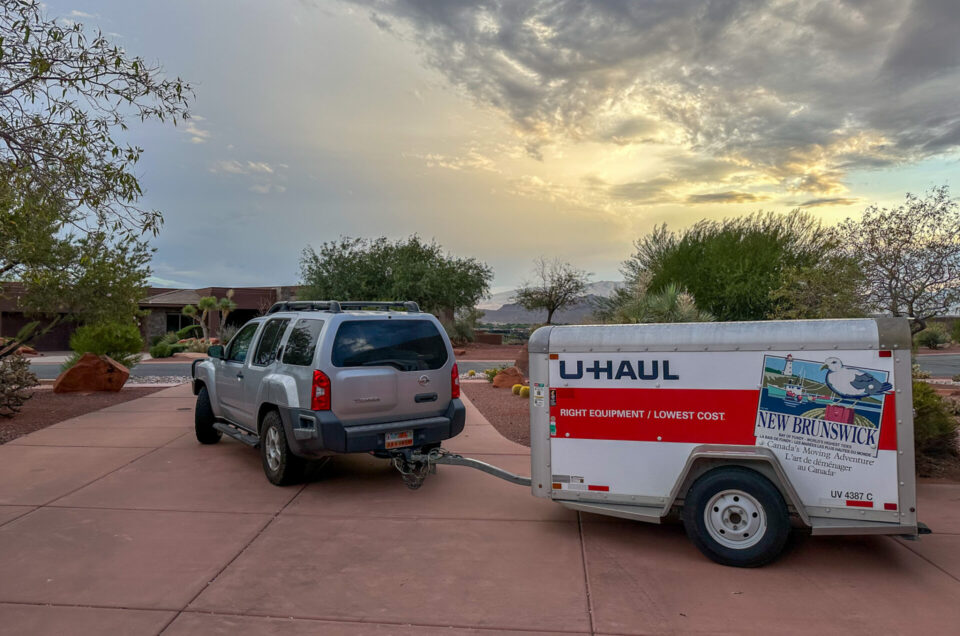
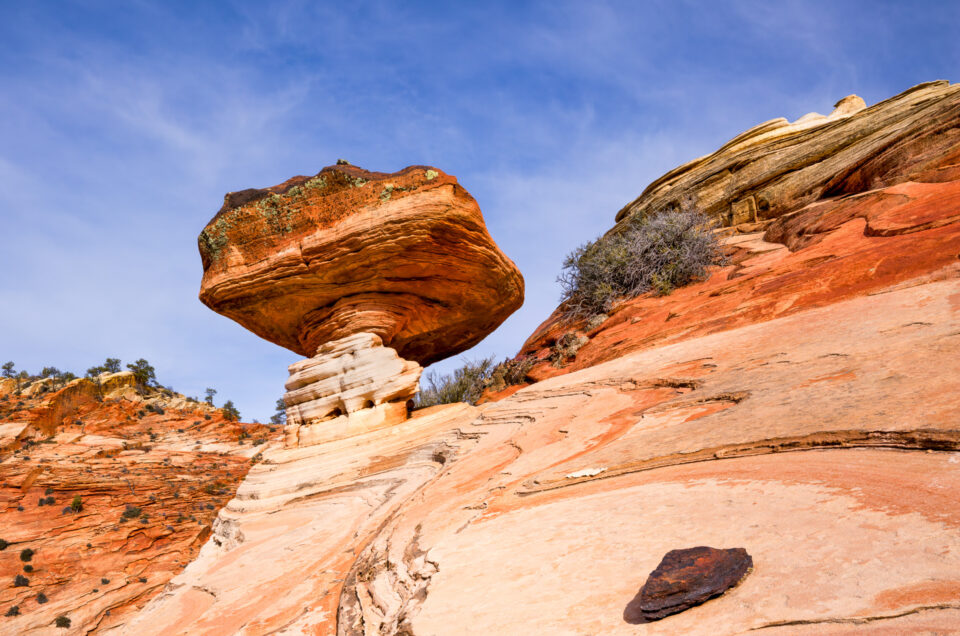
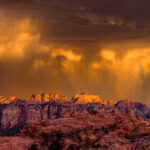
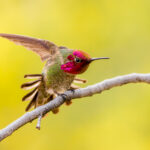
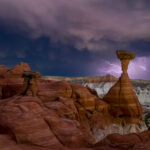

Leave a reply